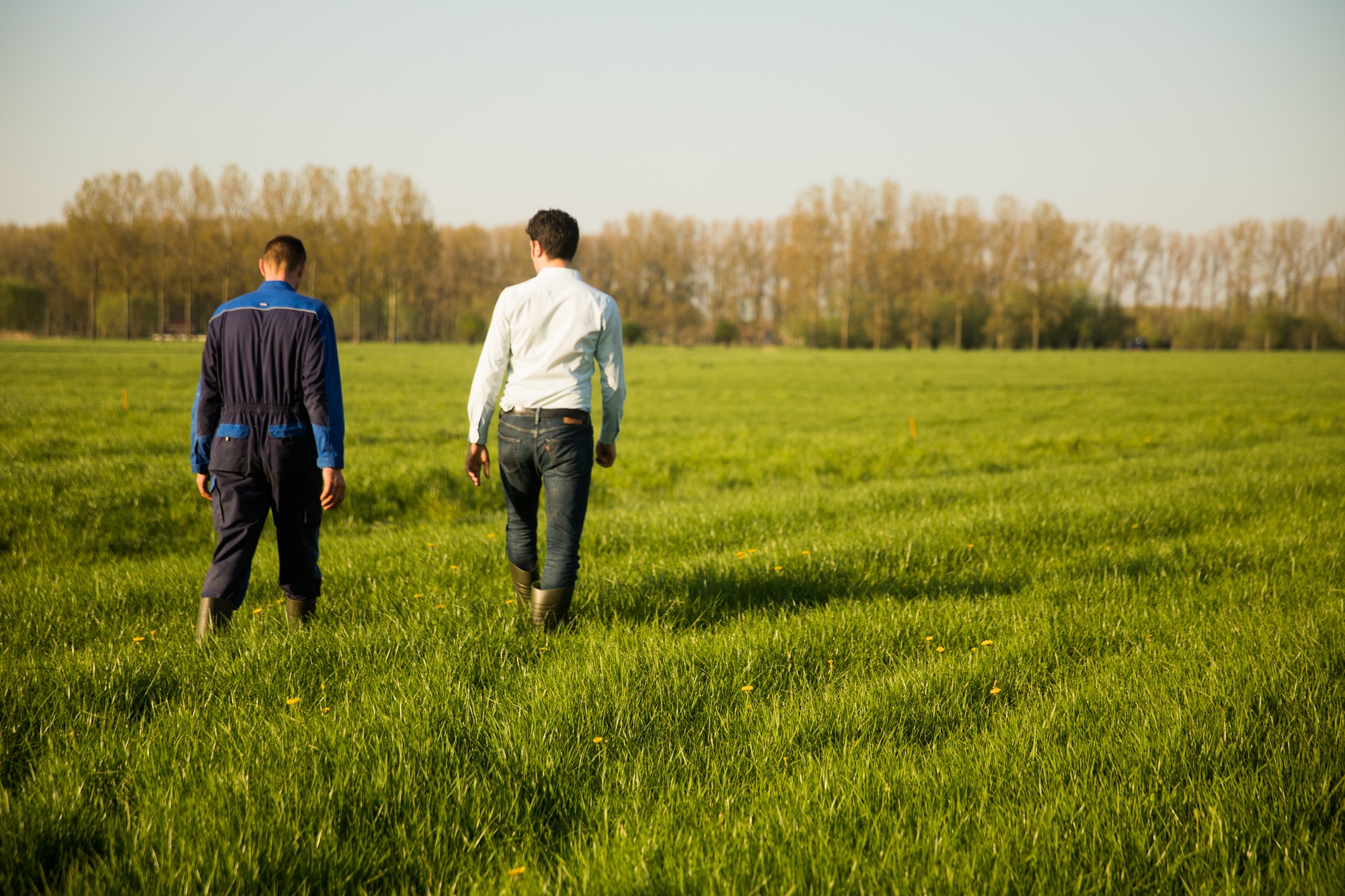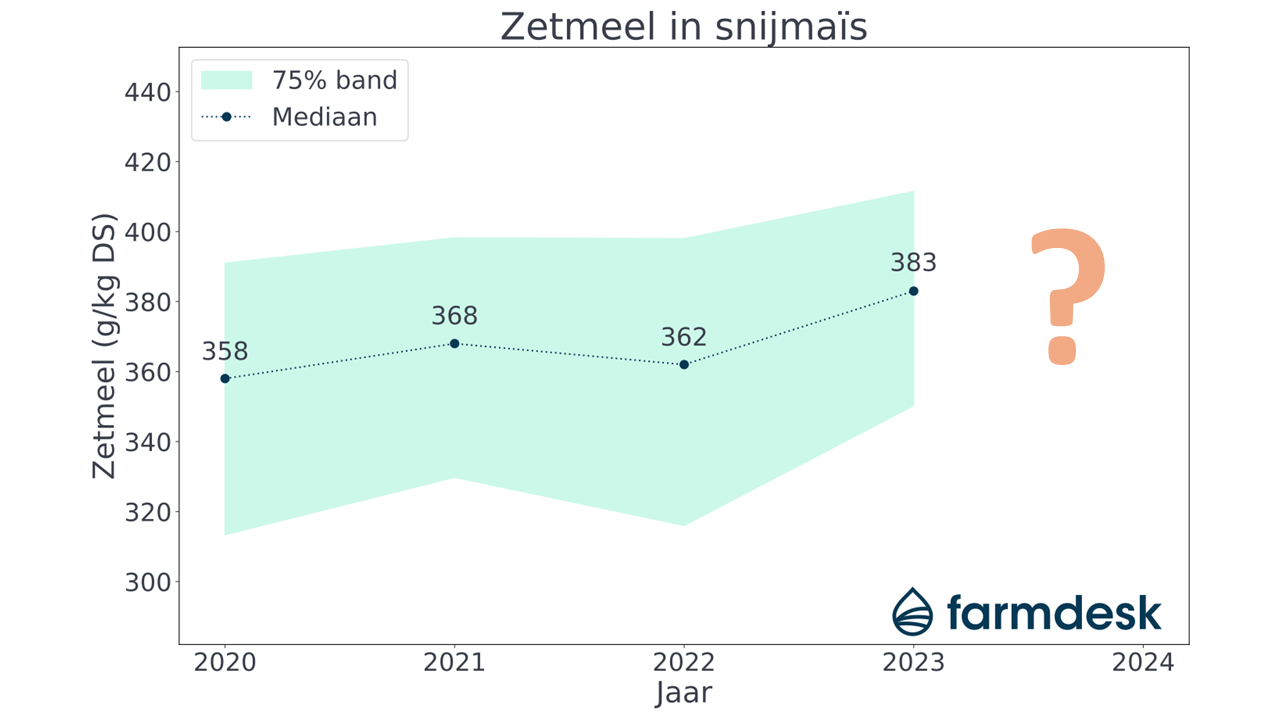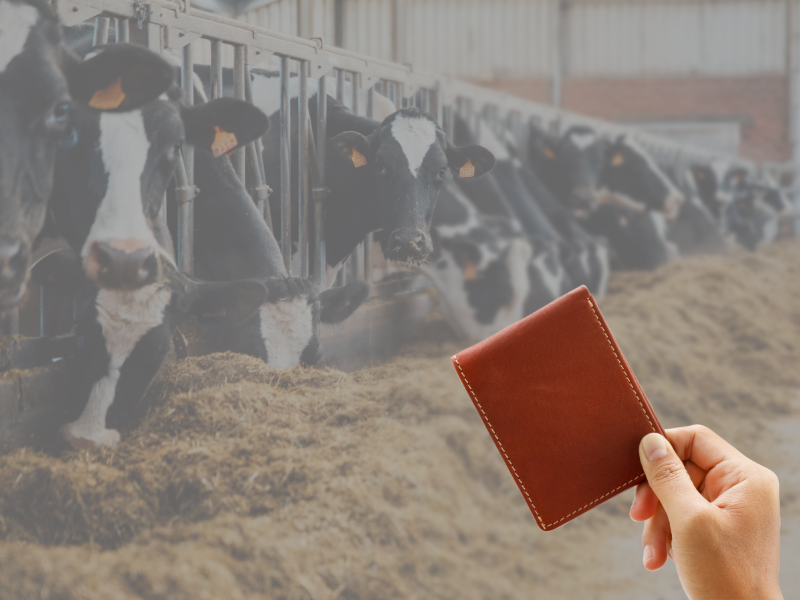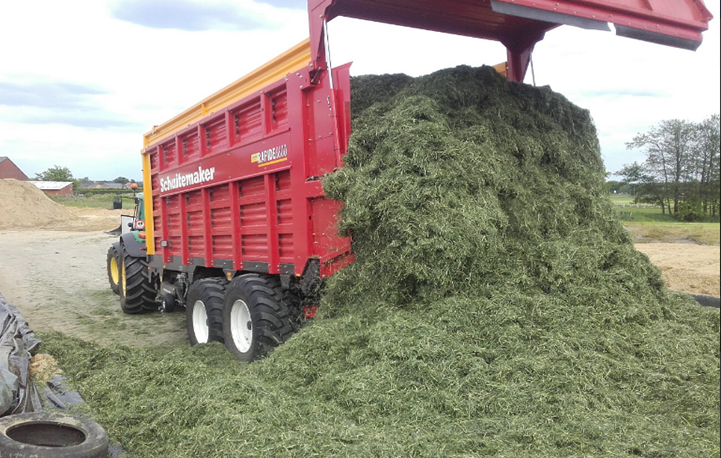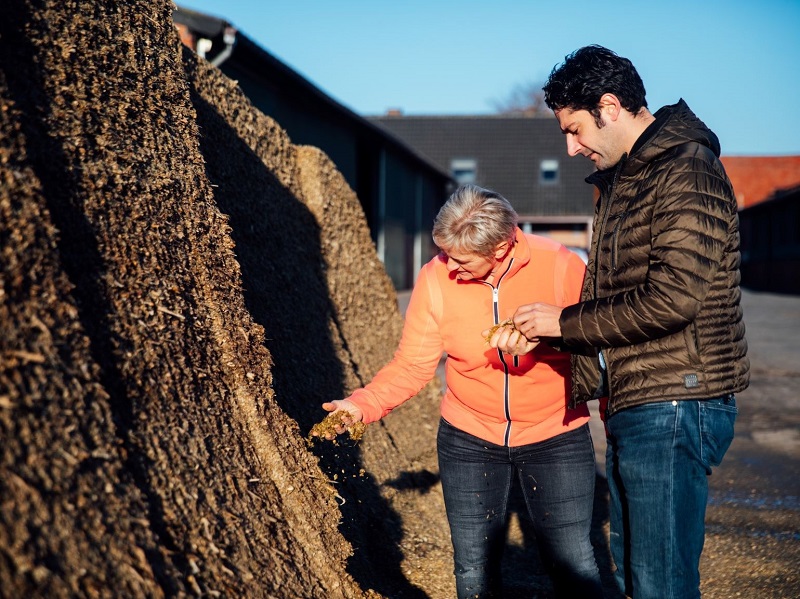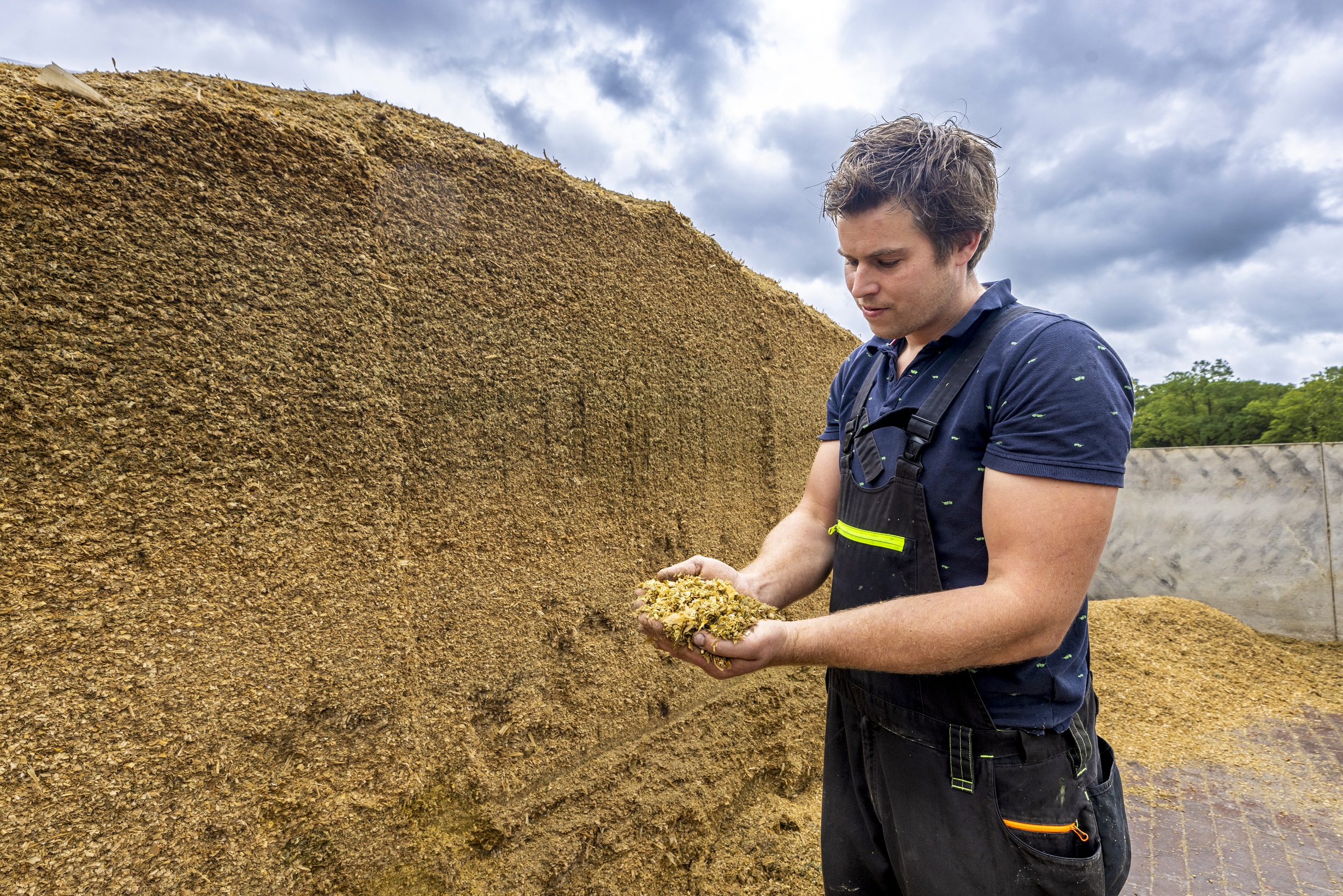The article below is based on cut corn analysis from Farmdesk users spread across the Netherlands and Belgium. For 2020 we had 79 reports, for 2021 we had 146 reports and for 2022 already 76 reports.
The feeding season with the new cut corn has already started on many farms. The quality is highly variable.
With a nice moist soil and/or irrigation, the corn had the weather with the many hours of sunshine of 2022. This corn can produce nice starch and energy content. What we do see is that this corn can still also wear traces of the heat resulting in a poorer digestibility of the stalk. We see this in the relatively high NDF and ADL values.
Cut corn that had sufficient water during flowering and thus did fertilize well, did have good cob setting, but often went premature due to heat and drought. Here we see reduced starch and energy content and accompanying poorer stem digestibility with relatively high NDF and ADL values. Especially if these were harvested dry earlier.
There was also cut corn that did not have enough water at flowering, resulting in bad cob setting. Sometimes the plant itself also dried out severely. This produced cut corn with very low starch content and difficult to digest plant material. If not harvested on time, there is a chance of moldiness and really bad results. These lots were hopefully harvested early and ensiled separately to feed young cattle or other less productive cattle.
Perhaps the latter silages don't show up much in the statistics that we can glean from Farmdesk because livestock producers may believe that they prefer not to incur further analysis costs.
Over half of the 2021 analysis results are now already in for 2022 and so we can see the first trends.
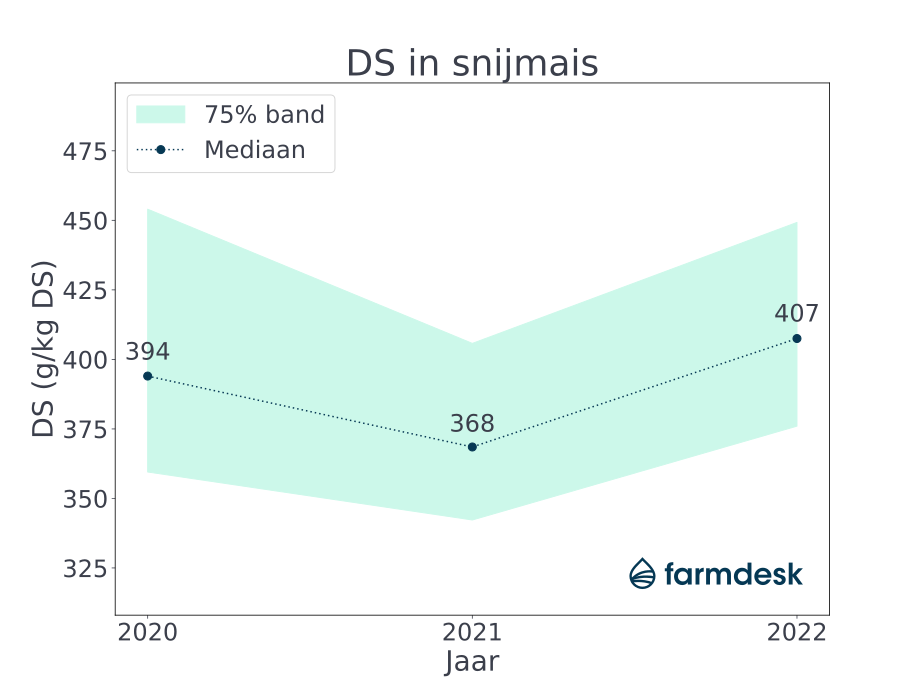
We see relatively dry silage, reminiscent of the dry year 2020, but often even drier ensiled because they should have been actually harvested as early as the second half of August. This was so early for many livestock farmers (contractors) compared to other years that they still waited until early September which in turn was too late for some plots.
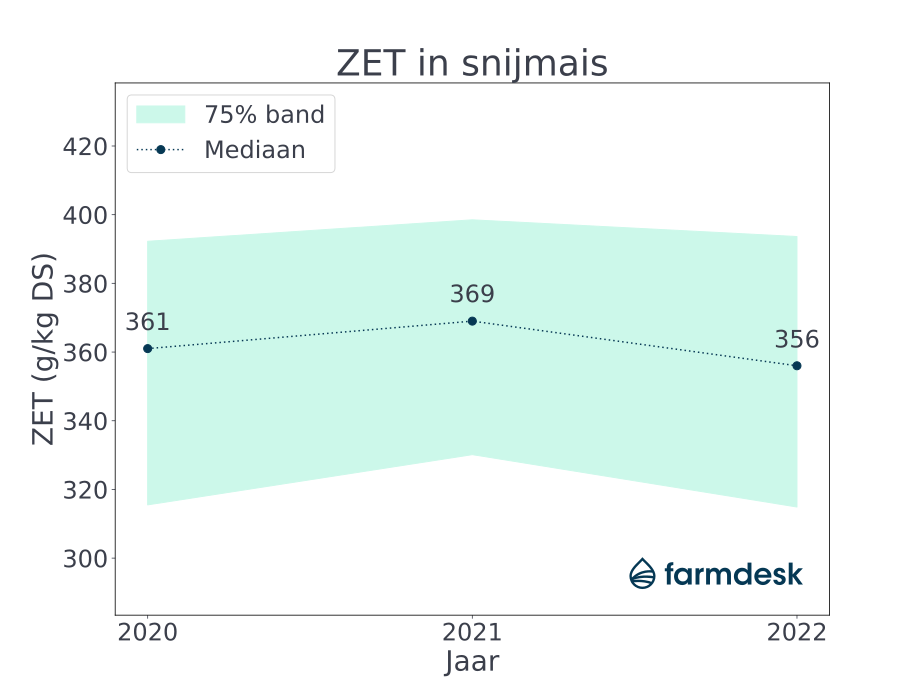
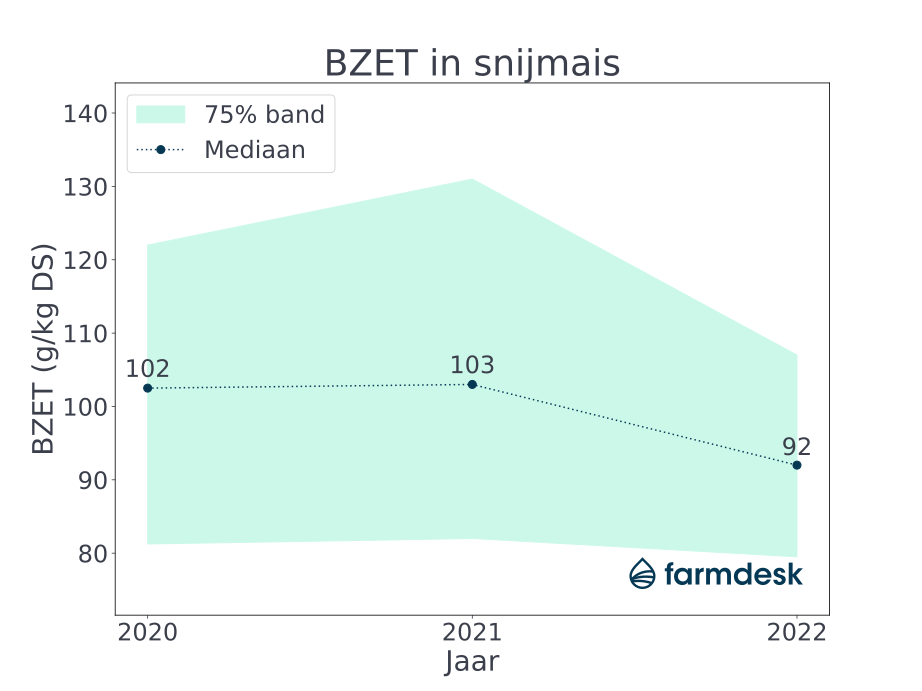
Inferior starch content because of insufficient cob setting is the trend. The resistance of starch (BZET) is moderate despite dry silage, perhaps because the cob became emergency ripe rather than truly ripe.
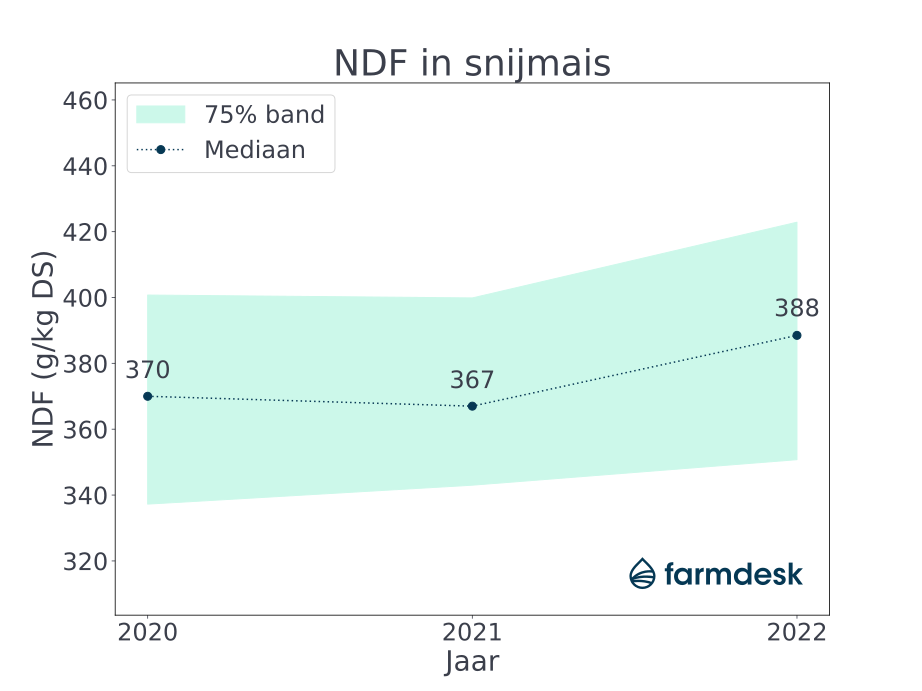
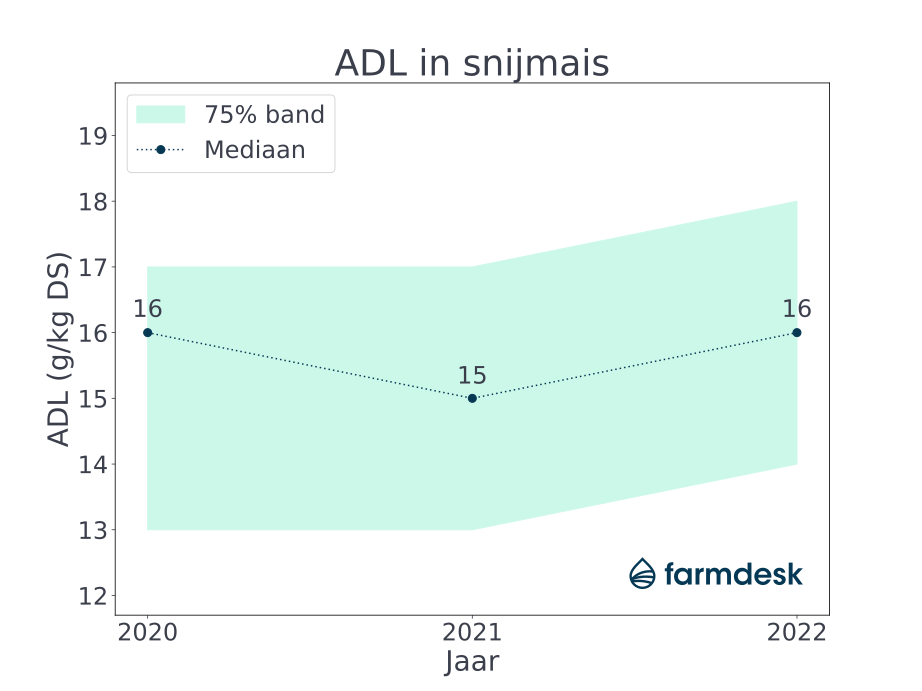
High NDF values combined with relatively high ADL indicates many structural carbohydrates that are also relatively difficult to digest.
Combined with rapid post-harvest feeding, we are seeing reduced feed intake, poorly digested fibrous manure and substandard milk production. Later ensilage of these silages will bring some solace in the future, but as they are often dry silages, I expect only slight improvement as time goes on.
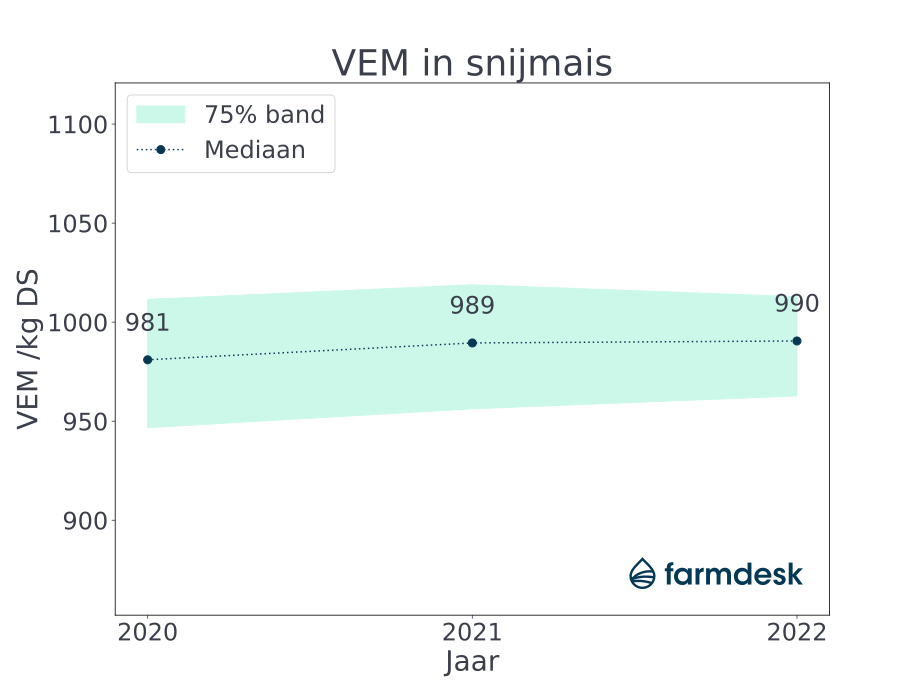
The energy content in VEM measured in terms of median VEM seems to be good, although there are more outliers to the bottom than the top. On the first farms to start using the new silages, we do see that cattle often have difficult digestion.
Power forage low in crude fiber seems best suited to this, especially if it provides quick energy in the rumen, since the FOS contents of the silage are low. Extra young and sugar-rich spring grass or beets with high sugar content may also provide relief. Moreover, we see that feedstuffs with both fast rumen energy and rumen protein have an advantage over protein-rich components without fast rumen energy.
"In short, we're going to have to counteract the summer of 2022 in the silage cut with proper winter rations tailored to the analyses of the silage. An exciting challenge for dairy farmers and Farmdesk."
Wim Govaerts


